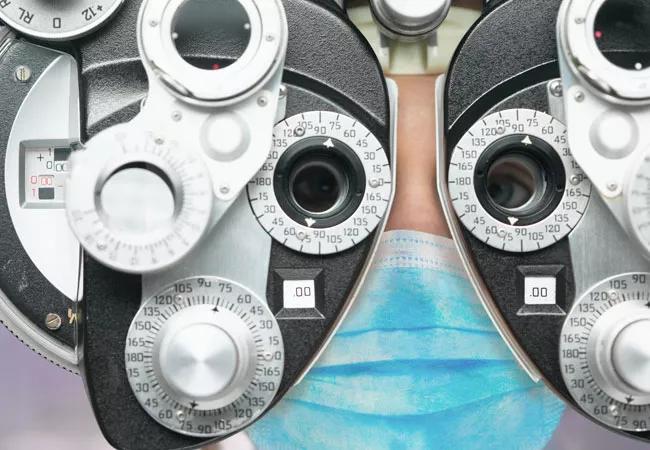Large cohort study supports early consideration of aggressive therapy

Among patients with neuromyelitis optica spectrum disorder (NMOSD), onset of disease before age 21 years increases the risk of severe residual visual loss (SRVL) more than fourfold, and the effect is independent of disease duration. That’s the finding of a retrospective study of a large NMOSD cohort published in Multiple Sclerosis Journal (2021 Epub Jan 6) by Cleveland Clinic researchers.
Advertisement
Cleveland Clinic is a non-profit academic medical center. Advertising on our site helps support our mission. We do not endorse non-Cleveland Clinic products or services. Policy
“Given the disabling consequences of severe residual visual loss, these findings argue for consideration of high-efficacy therapies as first-line treatment for patients with early-onset NMOSD,” says the study’s senior and corresponding author, Mary Rensel, MD, of Cleveland Clinic’s Mellen Center for Multiple Sclerosis Treatment and Research.
Dr. Rensel notes that only a handful of previous studies had assessed predictors of visual disability in NMOSD and they had yielded somewhat inconsistent results, including on the impact of age at onset.
So she and her colleagues retrospectively reviewed the records of all patients with a definitive diagnosis of NMOSD seen at the Mellen Center over an 11-year period from 2008 to 2019. They analyzed patients in terms of their last measured visual acuity assessment, with each eye scored as follows:
Patients were classified as having SRVL if the combined score for both their eyes was 4 or greater.
The researchers then analyzed an array of demographic and clinical variables from the time of patients’ last visual acuity test to assess the variables’ relationship to SRVL risk, using logistic regression modeling to adjust for confounders.
After exclusion of five patients positive for MOG-IgG antibodies, 106 patients with NMOSD were included in the analysis. The cohort was largely female (82%) and predominantly either white (67%) or Black (31%). The mean age at onset of NMOSD was 35.8 ± 16.5 years.
Advertisement
Twenty patients (18.9%) had SRVL (defined as ≥ 4 on above scoring system). Compared with the non-SRVL group, the SRVL group was characterized by:
Sex, race and disease duration were comparable between the two groups.
Sensitivity analysis that defined SRVL using cutoff scores of 3 or 2 yielded results consistent with those using the cutoff of 4. Notably, regression analysis adjusting for race, sex and disease duration showed that the odds ratio for SRVL was 4.68 in patients with NMOSD onset before age 21 versus those with onset at 21 or after (95% CI, 1.53-14.34; P = 0.007). In contrast, neither time from disease onset to initiation of NMOSD therapy, type of NMOSD therapy nor initial use of MS-specific therapy significantly predicted SRVL after adjusting for race, sex and disease duration.
“In our cohort, onset of NMOSD before age 21 was associated with worse visual disability, independent of disease duration,” says the study’s first author, Gabrielle Macaron, MD, adjunct staff with Cleveland Clinic’s Mellen Center. “We also saw that patients with early disease onset were more likely to present with bilateral optic neuritis and to have suffered two or more optic neuritis episodes. These findings are in keeping with literature reports of optic neuritis occurrence in younger patients with NMOSD.”
Advertisement
She adds, however, that while early disease onset has been linked to worse visual disability in some other cohorts of patients with NMOSD, the association has not been consistent.
She and her study co-authors write that the reason visual loss is more common and prominent in patients with early-onset NMOSD is not clear and that further research must be done to clarify whether it results from a severe initial attack or from recurrent optic neuritis throughout the disease course before highly effective therapies are used in younger patients. They argue that clinical trials of differing treatment approaches are needed and note that results of an ongoing trial of eculizumab for pediatric NMOSD are expected in 2024.
“In the meantime,” Dr. Rensel concludes, “we suggest that early high-efficacy therapies for NMOSD should be prioritized as first-line options in younger patients with this disease in order to avert irreversible visual disability.”
Dr. Rensel and additional NMOSD experts from Cleveland Clinic and other Northeast Ohio centers will be offering a complimentary half-day livestreamed educational seminar on NMOSD for patients, family members and caregivers on Thursday morning, March 11, 2021. Those interested can register at ccfcme.org/nmoeducation by March 9.
Advertisement
Advertisement

Advances in genomics, spinal fluid analysis, wearable-based patient monitoring and more

Case study of radial-to-axillary nerve transfer for tumor-related deltoid nerve injury

An update on the technology from the busiest Gamma Knife center in the Americas

Real-time adjustments may help reduce bothersome dyskinesias

Anatomical modeling can identify optimal surgical candidates, study suggests

Add AI to the list of tools expected to advance care for pain patients

New guidelines from Brain Trauma Foundation urge early and aggressive treatment

Cleveland Clinic study investigated standard regimen